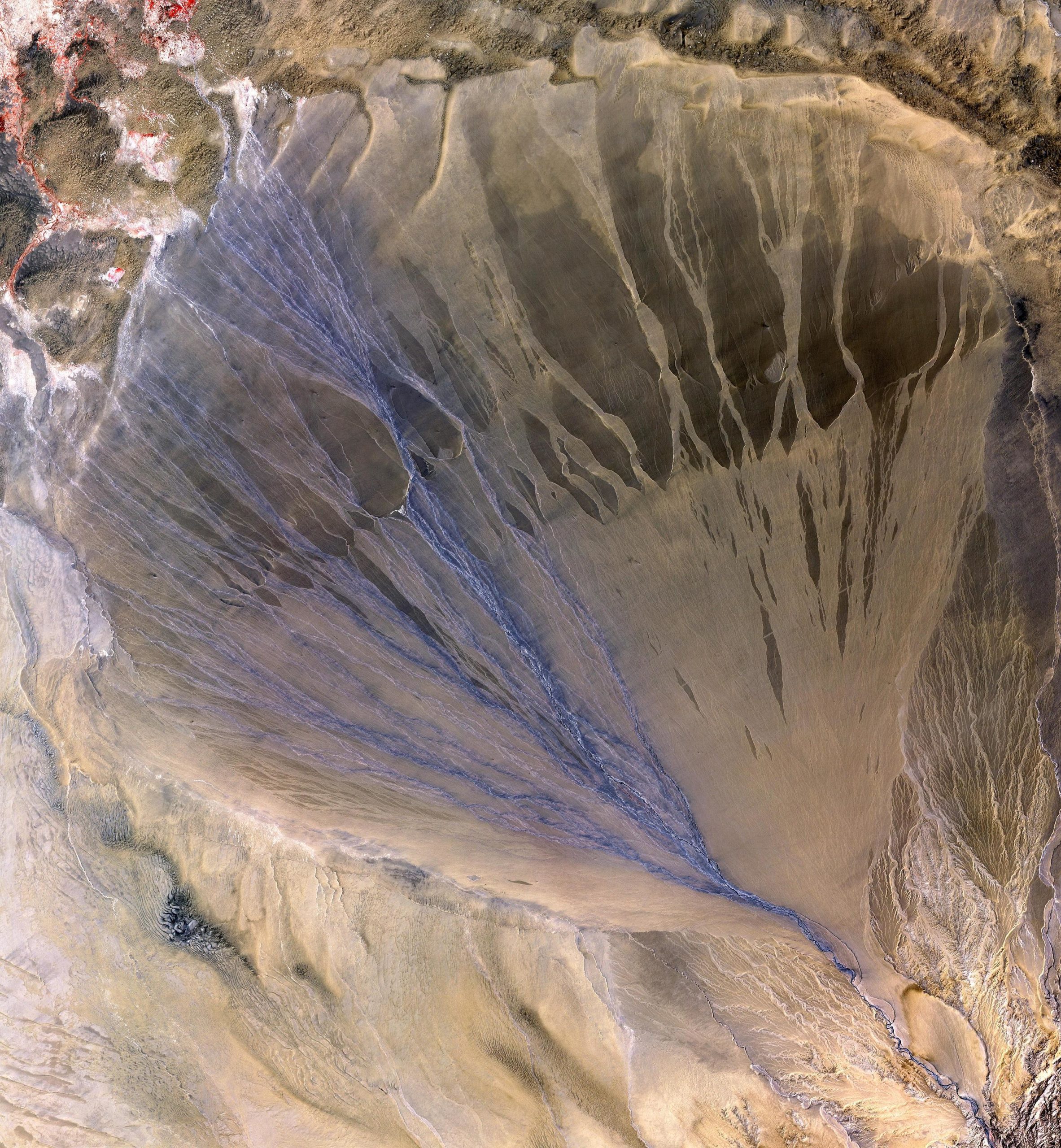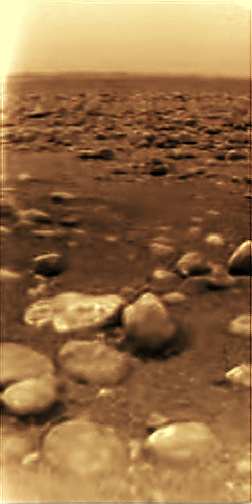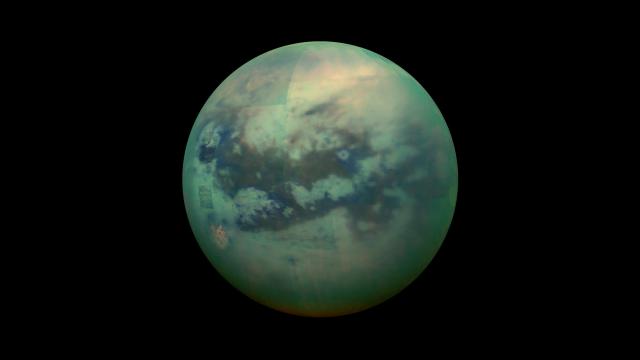If you were soaring above the surface of Saturn’s largest moon, Titan, you’d see mountains, rivers, lakes and seas, but you might also run into a monsoon-like rainstorm. Severe weather doesn’t happen very often on Titan, but new research suggests than when it does, the skies unleash torrents of liquid methane that floods and carves the moon’s icy surface.
Saturn’s largest moon, Titan. This is how the moon would look if its thick, hazy atmosphere was removed. (Image: NASA/Cassini)
Titan is the largest of Saturn’s 60 moons, which is roughly the size of Mercury. A visitor from Earth would recognise many features, including an atmosphere, volcanoes, mountains, and sand dunes. And like Earth, Titan features free-flowing liquid at the surface, manifesting as rivers, lakes and seas.
New research published in Nature Geoscience identifies some similarities we didn’t know about before, namely regional weather patterns and severe seasonal rainstorms.

An alluvial fan as seen in China. Similar features were discovered on Titan, suggesting the presence of rainstorms. (Image: NASA)
It rains liquid methane on Titan, that we already knew. But going into the new study, UCLA researchers Jonathan Mitchell and Sean Faulk figured these storms happen about once every thousand years or so — so called “millennial events”. Turns out that these storms happen roughly once per Titan year, which is 29.5 Earth years. So these storms are rare, just not as rare as previously thought.
When these rainstorms happen, they aren’t subtle. Climate models produced by Mitchell and Faulk shows a foot of rain a day, which is comparable to the record-setting rainfall produced by Hurricane Harvey this past summer.
The smoking gun for this discovery comes in the form of alluvial fans. When these storms hit, the intense rainfall floods the moon’s icy surface in the same way that extreme rainstorms shape Earth’s rocky surface. The heavy flows of liquid methane pours around mountains, hills and the steep walls of canyons, picking up and delivering bits of sand and sediment. This erosion process produces the characteristic triangle-like shape of alluvial fans, which are also seen on Earth and Mars.

This image of Titan’s surface, taken by the Huygens probe, is the only image from the surface of a body further away than Mars. (Image: NASA/Huygens)
These observations were made possible by the late, great Cassini probe, which used its radar instrument to detect the alluvial fans. As noted in the new study, these surface features are primarily located near the centres of Titan’s northern and southern hemispheres but slightly closer to the poles than to the equator.
These variations suggest that, like Earth, precipitation patterns on the moon are regionally specific; intense storms are developing along Titan’s wetter, cooler higher latitudes, while dry conditions persist in the lower latitudes. We see similar contrasts on Earth, where storms and blizzards are common in North America and Europe during the winter.
The heavy rainfall and the resulting runoff performs a key role in eroding the surface and filling lakes. Meanwhile, in areas where rainfall is sparse to nonexistent, the surface is littered with sand dunes. Previous research showed that liquid methane tends to collect at higher latitudes, but this is the first study to show that extreme rainfall events may be triggering major sediment transport and erosion.
Importantly, the UCLA scientists didn’t actually observe rainfall on Titan. The reason for this is partly due to the length of the Titan year; Cassini only managed to observe the moon across three of its seasons. The estimates used in the study were churned by computers, which simulated Titan’s hydraulic cycle. Hopefully future missions to Titan will actually capture these storms in action.
